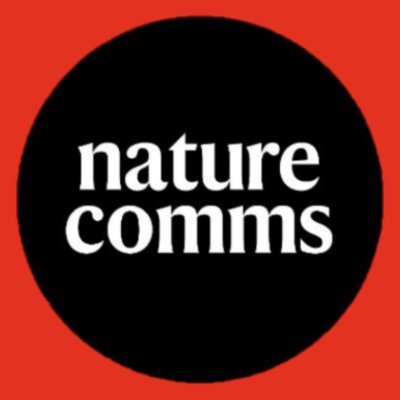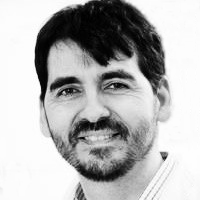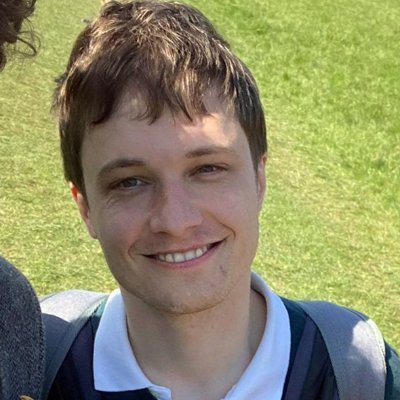
David Bradley
@dbradley534
Followers
338
Following
4K
Media
19
Statuses
899
Bioinformatician. Alumnus of @Cambridge_Uni and @emblebi. PhD with @pedrobeltrao and postdoc with @landrychristian. Kinases + Ab.
United Kingdom
Joined May 2015
Thrilled to see this paper now published in @CellSystemsCP. Thank you to the editor and 3 anonymous reviewers, who significantly improved this work: https://t.co/kf0zEsGUbs A short personal perspective is below..
I am truly excited to share one of the major works to emerge from my postdoc, now on bioRxiv: https://t.co/Y2YHSCM7Rx We explore the role of differential 'substrate quality' on the phosphorylation of kinase targets, using as our case study the master kinase CK2 (1/n).
1
4
11
##SnowLeopards exhibit extremely low #GeneticDiversity, making them more vulnerable to environmental changes and increasing their risk of extinction as climate shifts threaten their specialized habitats. https://t.co/OS5YZVby1F
phys.org
There are relatively few snow leopards in the world, and it has likely been that way for a long time, a new study indicates. This situation increases their risk of extinction in a changing environm...
0
6
25
How does cryptic genetic variation influence the long-term fate of gene duplicates (paralogs)? Our new study addresses this question by dissecting the evolutionary potential of redundant myosin paralogs in yeast https://t.co/fnJ7Tv4VZY (1/12)
nature.com
Nature Communications - Over time, paralogous genes accumulate changes in their sequences that do not affect their function, which is called cryptic variation. Using paralogous myosins, this study...
1
1
1
Despite the (mounting) suspicion that I am just screaming into the void, I thought that it would be discourteous NOT to mention that the pre-print quoted below is now, in fact, a 'print', on the occasion of its publication in Nature Microbiology: https://t.co/C7AjHWV5zr Enjoy!
nature.com
Nature Microbiology - FIKK effector kinases underwent rapid evolutionary expansion and are a druggable target in Plasmodium falciparum.
Hey. You folks like kinases, right? Check out our latest preprint on the evolution and specificity of effector kinases for P. falciparum. Among many findings, we see that P. falciparum has a bona fide tyrosine kinase (!) and that this evolved recently from an S/T ancestor (1/5).
0
2
8
Out Now! The fast-evolving FIKK kinase family of Plasmodium falciparum can be inhibited by a single compound https://t.co/R7aGyVjGIR
#PlasmodiumFalciparum #FIKKKinase #NatureMicrobiology
0
10
26
#UniversityChallenge represents the best of us ❤️🤓 What to do on Monday nights now?! Congrats Christ's Cambridge & commiserations Warwick - one of the ALL TIME great finals 🏆 @amolrajan created supportive environment where teams are challenged but flourish too. Thanks
8
16
315
Join us for our new online seminar series, featuring two talks on protein modules every month! The first session kicks off at 6pm CET Feb 10 with Dr. Gergő Gógl (@AffProf) and Dr. Ugo Dionne (@dionne_ugo). Register to attend: https://t.co/8BXZ0uayrA
0
6
6
I'm proud to share that our article has been published in @NatureComms Our findings reveal fascinating patterns, explained by a theoretical model proposed over 100 years ago by the legendary J.B.S. #Haldane ⭐️ #Hybridization #Adaptation #Evolution
Hybrids have complex genomes that influence their adaptive potential. Bautista et al. show that yeast hybrids adapt slower than their parental species, primarily due to a reduced rate of loss of heterozygosity in key genes @carlabautistaro @landrychristian
https://t.co/IVn7B7SIBa
6
6
25
📣We are delighted to announce that Québec City (Canada) has been selected to host our annual conference in 2027. The meeting will be held from June 20 to 24, 2027, at the Québec City Convention Centre. See https://smbe/org news items for details @SMBEmeetings #smbe2027
1
13
31
We have a job opening here at the Brenton group at the @CRUK_CI. Come join us for opportunities to work on multiomics datasets (and more) to help us address unmet clinical needs in ovarian cancer Job details can be found here: https://t.co/U74ECCsghQ
1
3
5
It is with great sadness we share the death of David P Judge, who started the University's Bioinformatics Training Facility. "He will be sadly missed but will have the gratitude of a multitude of scientists and clinicians who graced his training room" https://t.co/ZshQBaTYXU
1
2
2
Phosphorylation can regulate protein function via diverse mechanisms, including the regulation of protein conformations. In our new preprint @m_correa_m compared structures of the same proteins and protein familes in phospho and non phosphorylated forms
biorxiv.org
Post-translational modifications (PTMs), particularly protein phosphorylation, are key regulators of cellular processes, impacting numerous aspects of protein activity. Despite widespread phosphory...
1
26
121
Very excited to share the preprint of our latest work “Predicting the natural yeast phenotypic landscape with machine learning”, now available at: https://t.co/2My0JEedNs This research was part of my PhD at @niceyeastlab. Here are few highlights from our study:
biorxiv.org
Most organisms’ traits result from the complex interplay of many genetic and environmental factors, making their prediction from genotypes difficult. Here, we used machine learning models to explore...
1
14
39
DAVID ortholog: An integrative tool to enhance functional analysis through orthologs. #Orthologs #FunctionalAnalysis #Bioinformatics
https://t.co/K8R5PjmP4d
academic.oup.com
AbstractMotivation. The Database for Annotation, Visualization, and Integrated Discovery (DAVID) is a web-based bioinformatics system for the functional in
0
18
78
Our team in Orléans (France) is looking for a new postdoc, to work closely with a research associate, Ibtissam Talhaoui, on a project focused on potential SUMO E3 ligases targeting the nucleosome. The details here:
0
24
35
Two points that have been on my mind are described in the thread below regarding how the Baker lab runs: 1) should we have more group/team projects which means some lab members would not have first author papers; and 2) I could easily take a year off from conferences/travel.
With David and the Baker Lab in the spotlight today, I wanted to share some insights into the @UWproteindesign and how it operates, a glimpse behind the curtain. I had planned to write this post-graduation, but now seems as good a time as any. (Got twitter blue free trial so this
5
3
35
Finally, I want to emphasise that the paper was a team effort and collaboration between the @landrychristian and @juditvr labs, co-led by @AlexHgO, and with huge contributions from the other authors (Rohan, Alex D, Mario, Ugo + Alexis), who were pivotal for publication. Enjoy!
0
0
2
Overall, there is a lot of functionless cross-talk that can be tolerated. This can generally be considered as biological 'noise' arising from evo. and biophysical constraints. The remaining steps are to understand the mechanism of toxicity and fraction of sites that are harmful
1
0
1
This fits with observations from our fitness data that there are kinase strains that can tolerate hundreds of spurious p-sites but with very small fitness defects. Many off-targets sites are therefore benign but the culprit sites for toxicity remains elusive. (9/n)
1
0
1


















